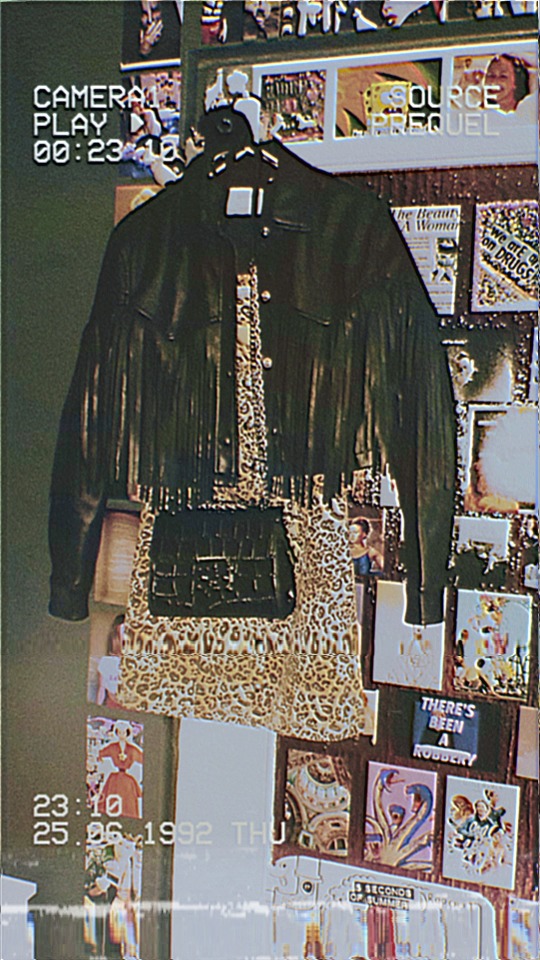#nemesida
Text

𝓂𝒾𝓈𝓈𝒾𝓃𝑔 𝓎𝑜𝓊
#nemesida#my editing#sheep#cute sheep#morute#dollcore#dollette#coqeutte#coquette dollete#pale#doll#gothic#nature#lamb#angel#angel dust#angelcore
549 notes
·
View notes
Text
When i loosing a try, but in hub Moros and Nemesida are waiting for me:

26 notes
·
View notes
Text
[Media] WAF Bypass Tool
WAF Bypass Tool
WAF bypass Tool is an open source tool to analyze the security of any WAF for False Positives and False Negatives using predefined and customizable payloads. Check your WAF before an attacker does. WAF Bypass Tool is developed by Nemesida WAF team with the participation of community.
https://github.com/nemesida-waf/waf-bypass
#cybersecurity
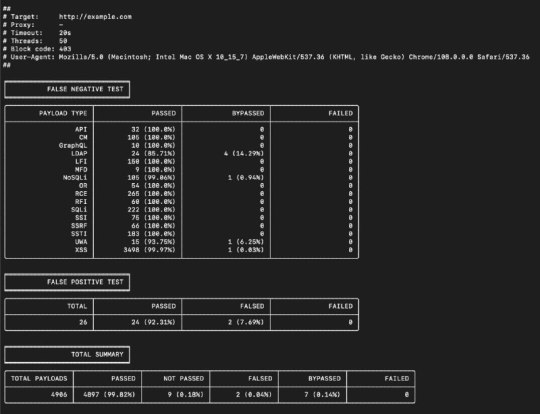
2 notes
·
View notes
Photo

Nemesida by KAENKO DI
73 notes
·
View notes
Photo

Nemesida
Shop link https://www.teepublic.com/user/kaenkodi
Insta https://www.instagram.com/kaenkodi/
14 notes
·
View notes
Photo
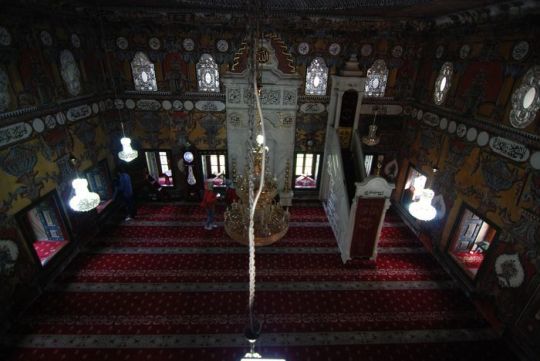
Diocletianopolis was uncovered a not big amphitheater
In the southwestern part of Diocletianopolis was uncovered a not big amphitheater. It was built in the time of Constantine the Great (306-337) and after 325 it was not used for gladiator’s combats, because these were banned in the Eastern Empire. Various spectacles and attractive wrestles with trained animals took place here for the entertainment of the garrison, the civil- ian population and the numerous holidaymak-ers. The amphitheater was made of stone and timber. For part of the wooden seats the natu-ral slope of the terrain was used. The long axis of the elliptic arena is 39 m (north-south), and the short axis is 24 m. The arena was accessed through two arched passages, from the north and the south. Staff rooms have been found contiguous to the building. The amphitheater of Diocletianopolis is a common provincial small-size place of entertainment.
“Thrace is adorned by the big cities of Philippopolis (Ammianus Marcellinus, XXVII, 12)
Stara Zagora is situated at the southern foot of Sarnena Gora, part of the Sredna Gora mountain. At this site there was a Thracian settlement Beroe, around which in the early 2nd century AD the Roman city of Augusta Traiana was built. In the written sources, how-ever, the Latin name did not gain currency. The city was mentioned as Beroia, Be rone, Beroe, and later as Verea. From the reign of Marcus Aurelius (161-180) to Gal lien (253-268) the city was entitled to mint coins. This was a time of peaceful life in Thrace and many of the cities flourished (2nd century – first half of 3rd century). For the needs of the market economy numerous workshops were set up for the production of metal, wooden and glass articles, and jewelry.
Augusta Traiana became famous throughout the province with its bronze products: statuettes, medallions, mirrors, vessels, toilet boxes, appliques for carts and chariots. Local mosaicists made various kinds of floor mosaics with interesting subjects. Today color mosaics have been found at many places in public and wealthy residential buildings. On the one hand, they are indicative of a local school, and on the other, they are exponents of subjects typical for the provinces of the Roman Empire in this area. Builders from the city and its surroundings laid water pipelines and made beautiful fountains. One of these is a piece of art — in its upper part it had a stat-uette of a reclining nude boy wooden workmanship byzantium. Stonecutters cut slabs for the street pavement, architectural elements, statues and tombstones. The con-struction of the solid stone wall required work force at the quarries and stonecutting shops.
Priestesses in charge of important cults in the city
The city was organized on the model of the Hellenic poleis and had its local govern-ment. This was the city council (boule) and the people’s assembly (demos) of the inhabitants of Augusta Traiana. The first archon (municipal councilor) headed the college of councilors, where each councilor was responsible for different economic and judicial activities. Among the city elite were elected patrons (chairmen) of various associations and public organizations. Some were members of the Thracian Assembly (Koinon ton Thrakon). The high priests played an important role in the religious life of the city. So far 14 such priests are known, of whom 4 are women. This was a great honor to the female sex in Augusta Traiana. There are single instances in Nicopolis ad Istrum, Serdica, Pautalia, Philippopolis, but here they were multiple. Four of the male high priests were of Thracian descent.
From the city and its environs originate many cult monuments, which demonstrate the religious concepts and beliefs of the pop-ulation. The local Thracians worshipped the Heros (Thracian Horseman), and the deities of mixed adoration: Bendida-Artemis, Zeus- Sbelsurdos, Asclepius-Darsos. Here again the Hellenic influence was strong, most numerous being the dedications to Zeus, Hera, Apollo, Demetra. Roman veteran soldiers settled in Augusta Traiana and its urban territory, who honored their own cults (Jupiter, Victoria, Concordia, Nemesida). The arrival of immigrants from the East brought the cult of Jupiter Dolichenos, Sabasius, Isida, Sarapis, Harpocritos.
The population was heterogeneous, which added color to the everyday life and the diversity in religion and the artistic crafts.
The bloody square
The city was fortified with a stone wall after the invasion of the Costoboci in 170. This hap-pened during the reign of Emperor Marcus Aurelius (161-180). The citizens stood out the attacks of the Goths in the middle of the 3rd century. Hard times came in a little more than a century later. The Goths brought devastation in 376-378, then the Huns in the first half of the fifth century. A second parallel wall (pro- teichisma) was built in front of the existing wall. Emperor Justinian the Great (527-565) reconstructed the city and its walls, and in 778 similar measures were taken by the Byzantine Empress Irina. Then for a while the medieval Verea was renamed Jrinopolis.
1 note
·
View note
Photo
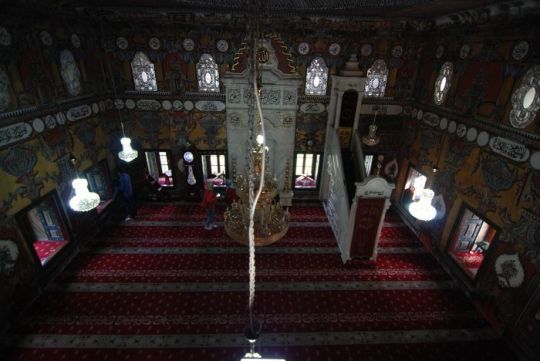
Diocletianopolis was uncovered a not big amphitheater
In the southwestern part of Diocletianopolis was uncovered a not big amphitheater. It was built in the time of Constantine the Great (306-337) and after 325 it was not used for gladiator’s combats, because these were banned in the Eastern Empire. Various spectacles and attractive wrestles with trained animals took place here for the entertainment of the garrison, the civil- ian population and the numerous holidaymak-ers. The amphitheater was made of stone and timber. For part of the wooden seats the natu-ral slope of the terrain was used. The long axis of the elliptic arena is 39 m (north-south), and the short axis is 24 m. The arena was accessed through two arched passages, from the north and the south. Staff rooms have been found contiguous to the building. The amphitheater of Diocletianopolis is a common provincial small-size place of entertainment.
“Thrace is adorned by the big cities of Philippopolis (Ammianus Marcellinus, XXVII, 12)
Stara Zagora is situated at the southern foot of Sarnena Gora, part of the Sredna Gora mountain. At this site there was a Thracian settlement Beroe, around which in the early 2nd century AD the Roman city of Augusta Traiana was built. In the written sources, how-ever, the Latin name did not gain currency. The city was mentioned as Beroia, Be rone, Beroe, and later as Verea. From the reign of Marcus Aurelius (161-180) to Gal lien (253-268) the city was entitled to mint coins. This was a time of peaceful life in Thrace and many of the cities flourished (2nd century – first half of 3rd century). For the needs of the market economy numerous workshops were set up for the production of metal, wooden and glass articles, and jewelry.
Augusta Traiana became famous throughout the province with its bronze products: statuettes, medallions, mirrors, vessels, toilet boxes, appliques for carts and chariots. Local mosaicists made various kinds of floor mosaics with interesting subjects. Today color mosaics have been found at many places in public and wealthy residential buildings. On the one hand, they are indicative of a local school, and on the other, they are exponents of subjects typical for the provinces of the Roman Empire in this area. Builders from the city and its surroundings laid water pipelines and made beautiful fountains. One of these is a piece of art — in its upper part it had a stat-uette of a reclining nude boy wooden workmanship byzantium. Stonecutters cut slabs for the street pavement, architectural elements, statues and tombstones. The con-struction of the solid stone wall required work force at the quarries and stonecutting shops.
Priestesses in charge of important cults in the city
The city was organized on the model of the Hellenic poleis and had its local govern-ment. This was the city council (boule) and the people’s assembly (demos) of the inhabitants of Augusta Traiana. The first archon (municipal councilor) headed the college of councilors, where each councilor was responsible for different economic and judicial activities. Among the city elite were elected patrons (chairmen) of various associations and public organizations. Some were members of the Thracian Assembly (Koinon ton Thrakon). The high priests played an important role in the religious life of the city. So far 14 such priests are known, of whom 4 are women. This was a great honor to the female sex in Augusta Traiana. There are single instances in Nicopolis ad Istrum, Serdica, Pautalia, Philippopolis, but here they were multiple. Four of the male high priests were of Thracian descent.
From the city and its environs originate many cult monuments, which demonstrate the religious concepts and beliefs of the pop-ulation. The local Thracians worshipped the Heros (Thracian Horseman), and the deities of mixed adoration: Bendida-Artemis, Zeus- Sbelsurdos, Asclepius-Darsos. Here again the Hellenic influence was strong, most numerous being the dedications to Zeus, Hera, Apollo, Demetra. Roman veteran soldiers settled in Augusta Traiana and its urban territory, who honored their own cults (Jupiter, Victoria, Concordia, Nemesida). The arrival of immigrants from the East brought the cult of Jupiter Dolichenos, Sabasius, Isida, Sarapis, Harpocritos.
The population was heterogeneous, which added color to the everyday life and the diversity in religion and the artistic crafts.
The bloody square
The city was fortified with a stone wall after the invasion of the Costoboci in 170. This hap-pened during the reign of Emperor Marcus Aurelius (161-180). The citizens stood out the attacks of the Goths in the middle of the 3rd century. Hard times came in a little more than a century later. The Goths brought devastation in 376-378, then the Huns in the first half of the fifth century. A second parallel wall (pro- teichisma) was built in front of the existing wall. Emperor Justinian the Great (527-565) reconstructed the city and its walls, and in 778 similar measures were taken by the Byzantine Empress Irina. Then for a while the medieval Verea was renamed Jrinopolis.
0 notes
Photo

Diocletianopolis was uncovered a not big amphitheater
In the southwestern part of Diocletianopolis was uncovered a not big amphitheater. It was built in the time of Constantine the Great (306-337) and after 325 it was not used for gladiator’s combats, because these were banned in the Eastern Empire. Various spectacles and attractive wrestles with trained animals took place here for the entertainment of the garrison, the civil- ian population and the numerous holidaymak-ers. The amphitheater was made of stone and timber. For part of the wooden seats the natu-ral slope of the terrain was used. The long axis of the elliptic arena is 39 m (north-south), and the short axis is 24 m. The arena was accessed through two arched passages, from the north and the south. Staff rooms have been found contiguous to the building. The amphitheater of Diocletianopolis is a common provincial small-size place of entertainment.
“Thrace is adorned by the big cities of Philippopolis (Ammianus Marcellinus, XXVII, 12)
Stara Zagora is situated at the southern foot of Sarnena Gora, part of the Sredna Gora mountain. At this site there was a Thracian settlement Beroe, around which in the early 2nd century AD the Roman city of Augusta Traiana was built. In the written sources, how-ever, the Latin name did not gain currency. The city was mentioned as Beroia, Be rone, Beroe, and later as Verea. From the reign of Marcus Aurelius (161-180) to Gal lien (253-268) the city was entitled to mint coins. This was a time of peaceful life in Thrace and many of the cities flourished (2nd century – first half of 3rd century). For the needs of the market economy numerous workshops were set up for the production of metal, wooden and glass articles, and jewelry.
Augusta Traiana became famous throughout the province with its bronze products: statuettes, medallions, mirrors, vessels, toilet boxes, appliques for carts and chariots. Local mosaicists made various kinds of floor mosaics with interesting subjects. Today color mosaics have been found at many places in public and wealthy residential buildings. On the one hand, they are indicative of a local school, and on the other, they are exponents of subjects typical for the provinces of the Roman Empire in this area. Builders from the city and its surroundings laid water pipelines and made beautiful fountains. One of these is a piece of art — in its upper part it had a stat-uette of a reclining nude boy wooden workmanship byzantium. Stonecutters cut slabs for the street pavement, architectural elements, statues and tombstones. The con-struction of the solid stone wall required work force at the quarries and stonecutting shops.
Priestesses in charge of important cults in the city
The city was organized on the model of the Hellenic poleis and had its local govern-ment. This was the city council (boule) and the people’s assembly (demos) of the inhabitants of Augusta Traiana. The first archon (municipal councilor) headed the college of councilors, where each councilor was responsible for different economic and judicial activities. Among the city elite were elected patrons (chairmen) of various associations and public organizations. Some were members of the Thracian Assembly (Koinon ton Thrakon). The high priests played an important role in the religious life of the city. So far 14 such priests are known, of whom 4 are women. This was a great honor to the female sex in Augusta Traiana. There are single instances in Nicopolis ad Istrum, Serdica, Pautalia, Philippopolis, but here they were multiple. Four of the male high priests were of Thracian descent.
From the city and its environs originate many cult monuments, which demonstrate the religious concepts and beliefs of the pop-ulation. The local Thracians worshipped the Heros (Thracian Horseman), and the deities of mixed adoration: Bendida-Artemis, Zeus- Sbelsurdos, Asclepius-Darsos. Here again the Hellenic influence was strong, most numerous being the dedications to Zeus, Hera, Apollo, Demetra. Roman veteran soldiers settled in Augusta Traiana and its urban territory, who honored their own cults (Jupiter, Victoria, Concordia, Nemesida). The arrival of immigrants from the East brought the cult of Jupiter Dolichenos, Sabasius, Isida, Sarapis, Harpocritos.
The population was heterogeneous, which added color to the everyday life and the diversity in religion and the artistic crafts.
The bloody square
The city was fortified with a stone wall after the invasion of the Costoboci in 170. This hap-pened during the reign of Emperor Marcus Aurelius (161-180). The citizens stood out the attacks of the Goths in the middle of the 3rd century. Hard times came in a little more than a century later. The Goths brought devastation in 376-378, then the Huns in the first half of the fifth century. A second parallel wall (pro- teichisma) was built in front of the existing wall. Emperor Justinian the Great (527-565) reconstructed the city and its walls, and in 778 similar measures were taken by the Byzantine Empress Irina. Then for a while the medieval Verea was renamed Jrinopolis.
0 notes
Text

#nemesida#pale#doll#dollcore#zombielamb#my editing#vintage#angelcore#angel#soft#vampcore#vampyr#vampire#victorian style#witch#witchcore#gothic#gothic lolita#lolita clothing#doll clothing#melancholy
159 notes
·
View notes
Photo
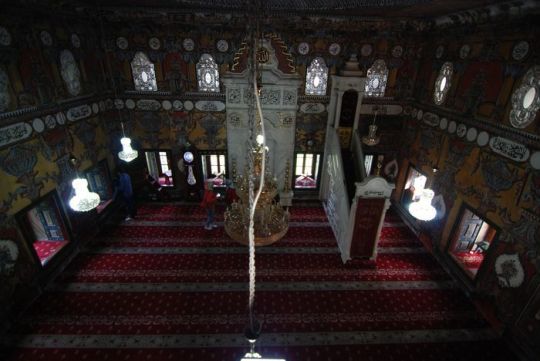
Diocletianopolis was uncovered a not big amphitheater
In the southwestern part of Diocletianopolis was uncovered a not big amphitheater. It was built in the time of Constantine the Great (306-337) and after 325 it was not used for gladiator’s combats, because these were banned in the Eastern Empire. Various spectacles and attractive wrestles with trained animals took place here for the entertainment of the garrison, the civil- ian population and the numerous holidaymak-ers. The amphitheater was made of stone and timber. For part of the wooden seats the natu-ral slope of the terrain was used. The long axis of the elliptic arena is 39 m (north-south), and the short axis is 24 m. The arena was accessed through two arched passages, from the north and the south. Staff rooms have been found contiguous to the building. The amphitheater of Diocletianopolis is a common provincial small-size place of entertainment.
“Thrace is adorned by the big cities of Philippopolis (Ammianus Marcellinus, XXVII, 12)
Stara Zagora is situated at the southern foot of Sarnena Gora, part of the Sredna Gora mountain. At this site there was a Thracian settlement Beroe, around which in the early 2nd century AD the Roman city of Augusta Traiana was built. In the written sources, how-ever, the Latin name did not gain currency. The city was mentioned as Beroia, Be rone, Beroe, and later as Verea. From the reign of Marcus Aurelius (161-180) to Gal lien (253-268) the city was entitled to mint coins. This was a time of peaceful life in Thrace and many of the cities flourished (2nd century – first half of 3rd century). For the needs of the market economy numerous workshops were set up for the production of metal, wooden and glass articles, and jewelry.
Augusta Traiana became famous throughout the province with its bronze products: statuettes, medallions, mirrors, vessels, toilet boxes, appliques for carts and chariots. Local mosaicists made various kinds of floor mosaics with interesting subjects. Today color mosaics have been found at many places in public and wealthy residential buildings. On the one hand, they are indicative of a local school, and on the other, they are exponents of subjects typical for the provinces of the Roman Empire in this area. Builders from the city and its surroundings laid water pipelines and made beautiful fountains. One of these is a piece of art — in its upper part it had a stat-uette of a reclining nude boy wooden workmanship byzantium. Stonecutters cut slabs for the street pavement, architectural elements, statues and tombstones. The con-struction of the solid stone wall required work force at the quarries and stonecutting shops.
Priestesses in charge of important cults in the city
The city was organized on the model of the Hellenic poleis and had its local govern-ment. This was the city council (boule) and the people’s assembly (demos) of the inhabitants of Augusta Traiana. The first archon (municipal councilor) headed the college of councilors, where each councilor was responsible for different economic and judicial activities. Among the city elite were elected patrons (chairmen) of various associations and public organizations. Some were members of the Thracian Assembly (Koinon ton Thrakon). The high priests played an important role in the religious life of the city. So far 14 such priests are known, of whom 4 are women. This was a great honor to the female sex in Augusta Traiana. There are single instances in Nicopolis ad Istrum, Serdica, Pautalia, Philippopolis, but here they were multiple. Four of the male high priests were of Thracian descent.
From the city and its environs originate many cult monuments, which demonstrate the religious concepts and beliefs of the pop-ulation. The local Thracians worshipped the Heros (Thracian Horseman), and the deities of mixed adoration: Bendida-Artemis, Zeus- Sbelsurdos, Asclepius-Darsos. Here again the Hellenic influence was strong, most numerous being the dedications to Zeus, Hera, Apollo, Demetra. Roman veteran soldiers settled in Augusta Traiana and its urban territory, who honored their own cults (Jupiter, Victoria, Concordia, Nemesida). The arrival of immigrants from the East brought the cult of Jupiter Dolichenos, Sabasius, Isida, Sarapis, Harpocritos.
The population was heterogeneous, which added color to the everyday life and the diversity in religion and the artistic crafts.
The bloody square
The city was fortified with a stone wall after the invasion of the Costoboci in 170. This hap-pened during the reign of Emperor Marcus Aurelius (161-180). The citizens stood out the attacks of the Goths in the middle of the 3rd century. Hard times came in a little more than a century later. The Goths brought devastation in 376-378, then the Huns in the first half of the fifth century. A second parallel wall (pro- teichisma) was built in front of the existing wall. Emperor Justinian the Great (527-565) reconstructed the city and its walls, and in 778 similar measures were taken by the Byzantine Empress Irina. Then for a while the medieval Verea was renamed Jrinopolis.
0 notes
Photo

Diocletianopolis was uncovered a not big amphitheater
In the southwestern part of Diocletianopolis was uncovered a not big amphitheater. It was built in the time of Constantine the Great (306-337) and after 325 it was not used for gladiator’s combats, because these were banned in the Eastern Empire. Various spectacles and attractive wrestles with trained animals took place here for the entertainment of the garrison, the civil- ian population and the numerous holidaymak-ers. The amphitheater was made of stone and timber. For part of the wooden seats the natu-ral slope of the terrain was used. The long axis of the elliptic arena is 39 m (north-south), and the short axis is 24 m. The arena was accessed through two arched passages, from the north and the south. Staff rooms have been found contiguous to the building. The amphitheater of Diocletianopolis is a common provincial small-size place of entertainment.
“Thrace is adorned by the big cities of Philippopolis (Ammianus Marcellinus, XXVII, 12)
Stara Zagora is situated at the southern foot of Sarnena Gora, part of the Sredna Gora mountain. At this site there was a Thracian settlement Beroe, around which in the early 2nd century AD the Roman city of Augusta Traiana was built. In the written sources, how-ever, the Latin name did not gain currency. The city was mentioned as Beroia, Be rone, Beroe, and later as Verea. From the reign of Marcus Aurelius (161-180) to Gal lien (253-268) the city was entitled to mint coins. This was a time of peaceful life in Thrace and many of the cities flourished (2nd century – first half of 3rd century). For the needs of the market economy numerous workshops were set up for the production of metal, wooden and glass articles, and jewelry.
Augusta Traiana became famous throughout the province with its bronze products: statuettes, medallions, mirrors, vessels, toilet boxes, appliques for carts and chariots. Local mosaicists made various kinds of floor mosaics with interesting subjects. Today color mosaics have been found at many places in public and wealthy residential buildings. On the one hand, they are indicative of a local school, and on the other, they are exponents of subjects typical for the provinces of the Roman Empire in this area. Builders from the city and its surroundings laid water pipelines and made beautiful fountains. One of these is a piece of art — in its upper part it had a stat-uette of a reclining nude boy wooden workmanship byzantium. Stonecutters cut slabs for the street pavement, architectural elements, statues and tombstones. The con-struction of the solid stone wall required work force at the quarries and stonecutting shops.
Priestesses in charge of important cults in the city
The city was organized on the model of the Hellenic poleis and had its local govern-ment. This was the city council (boule) and the people’s assembly (demos) of the inhabitants of Augusta Traiana. The first archon (municipal councilor) headed the college of councilors, where each councilor was responsible for different economic and judicial activities. Among the city elite were elected patrons (chairmen) of various associations and public organizations. Some were members of the Thracian Assembly (Koinon ton Thrakon). The high priests played an important role in the religious life of the city. So far 14 such priests are known, of whom 4 are women. This was a great honor to the female sex in Augusta Traiana. There are single instances in Nicopolis ad Istrum, Serdica, Pautalia, Philippopolis, but here they were multiple. Four of the male high priests were of Thracian descent.
From the city and its environs originate many cult monuments, which demonstrate the religious concepts and beliefs of the pop-ulation. The local Thracians worshipped the Heros (Thracian Horseman), and the deities of mixed adoration: Bendida-Artemis, Zeus- Sbelsurdos, Asclepius-Darsos. Here again the Hellenic influence was strong, most numerous being the dedications to Zeus, Hera, Apollo, Demetra. Roman veteran soldiers settled in Augusta Traiana and its urban territory, who honored their own cults (Jupiter, Victoria, Concordia, Nemesida). The arrival of immigrants from the East brought the cult of Jupiter Dolichenos, Sabasius, Isida, Sarapis, Harpocritos.
The population was heterogeneous, which added color to the everyday life and the diversity in religion and the artistic crafts.
The bloody square
The city was fortified with a stone wall after the invasion of the Costoboci in 170. This hap-pened during the reign of Emperor Marcus Aurelius (161-180). The citizens stood out the attacks of the Goths in the middle of the 3rd century. Hard times came in a little more than a century later. The Goths brought devastation in 376-378, then the Huns in the first half of the fifth century. A second parallel wall (pro- teichisma) was built in front of the existing wall. Emperor Justinian the Great (527-565) reconstructed the city and its walls, and in 778 similar measures were taken by the Byzantine Empress Irina. Then for a while the medieval Verea was renamed Jrinopolis.
0 notes
Photo
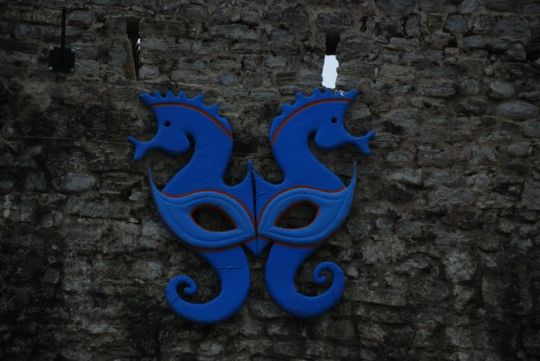
Augusta Traiana became famous
Augusta Traiana became famous throughout the province with its bronze products: statuettes, medallions, mirrors, vessels, toilet boxes, appliques for carts and chariots. Local mosaicists made various kinds of floor mosaics with interesting subjects. Today color mosaics have been found at many places in public and wealthy residential buildings. On the one hand, they are indicative of a local school, and on the other, they are exponents of subjects typical for the provinces of the Roman Empire in this area. Builders from the city and its surroundings laid water pipelines and made beautiful fountains. One of these is a piece of art — in its upper part it had a statuette of a reclining nude boy. Stonecutters cut slabs for the street pavement, architectural elements, statues and tombstones. The construction of the solid stone wall required work force at the quarries and stonecutting shops.
Priestesses in charge of important cults in the city
The city was organized on the model of the Hellenic poleis and had its local government. This was the city council (boule) and the people’s assembly (demos) of the inhabitants of Augusta Traiana. The first archon (municipal councilor) headed the college of councilors, where each councilor was responsible for different economic and judicial activities. Among the city elite were elected patrons (chairmen) of various associations and public organizations. Some were members of the Thracian Assembly (Koinon ton Thrakon). The high priests played an important role in the religious life of the city. So far 14 such priests are known, of whom 4 are women. This was a great honor to the female sex in Augusta Traiana. There are single instances in Nicopolis ad Istrum, Serdica, Pautalia, Philippopolis, but here they were multiple. Four of the male high priests were of Thracian descent.
From the city and its environs originate many cult monuments, which demonstrate the religious concepts and beliefs of the population. The local Thracians worshipped the Heros (Thracian Horseman), and the deities of mixed adoration: Bendida-Artemis, Zeus- Sbelsurdos, Asclepius-Darsos. Here again the Hellenic influence was strong, most numerous being the dedications to Zeus, Hera, Apollo, Demetra. Roman veteran soldiers settled in Augusta Traiana and its urban territory, who honored their own cults (Jupiter, Victoria, Concordia, Nemesida). The arrival of immigrants from the East brought the cult of Jupiter Dolichenos, Sabasius, Isida, Sarapis, Harpocritos.
0 notes
Photo

Listen or download Alexander Popov - Interplay Radioshow 342 for free now!
Artist: Alexander Popov
Show: Alexander Popov – Interplay Radioshow 342
Quality: 320 Kbps 48000 Khz
Genre: Trance
Source: RSS
Discover more Alexander Popov live sets & radioshows HERE | Listen or download more Interplay Radioshow episodes HERE
Alexander Popov – Interplay Radioshow 342 Tracklist
01. Chicane – Sailing [Armada Music]
02. Anton Ishutin – Nemesida [Magik Muzik]
03. Steve Brian & Trove – Lie To Yourself (Rodrigo Deem & Maximo Lasso Remix) [Enhanced Progressive]
04. ARTY – Take Your Time (Marcus Santoro Remix) [Armada Music]
05. RAM presents Dubyard – First Impression [AVA]
06. Costa & Elara – Sunrise [Raz Nitzan Music]
07. Andy Moor – Safe On Both Sides [Enhanced Progressive]
08. Light & Shadow vs. Luke Anderson – Daydream [Interplay Global]
09. Fisherman – Apache 2.0 [Armada Captivating]
10. Alexander Popov & ENZO feat. Cari – Stranger Inside (Aimoon Remix) [Interplay]
11. Hypersia & Amir Farhoodi – Dreamland [Interplay Global]
12. D72 – Mirages [Interplay]
13. Doppenberg – Twice As Far [ASOT]
The podcast Alexander Popov – Interplay Radioshow is embedded on this page from an open RSS feed. All files, descriptions, artwork and other metadata from the RSS-feed is the property of the podcast owner and not affiliated with or endorsed by EDMliveset.com.
Follow us on: Facebook, Twitter, Instagram, Reddit & VK
0 notes
Photo
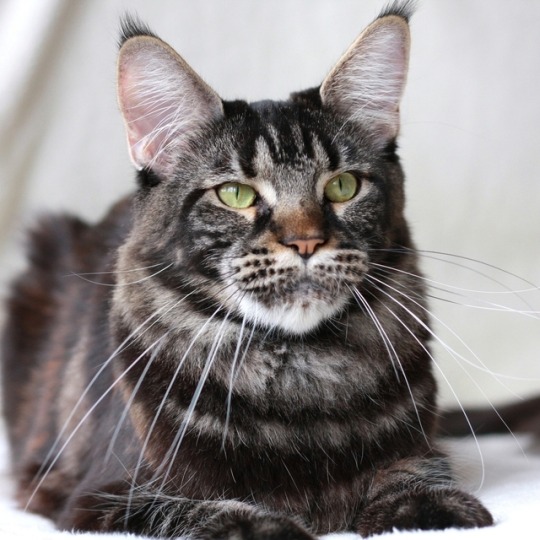
Кошка мейн кун Nemesida. Заботливая мама наших котят от 30.01.2017 . http://sternenburg.ru/kittens/ . Maine Coon cat Nemesida. Caring mother of our kittens from 01/30/2017 . #Mainecoon #mainecooncat #Кошка #мейнкун (hier: Moscow, Russia)
1 note
·
View note
